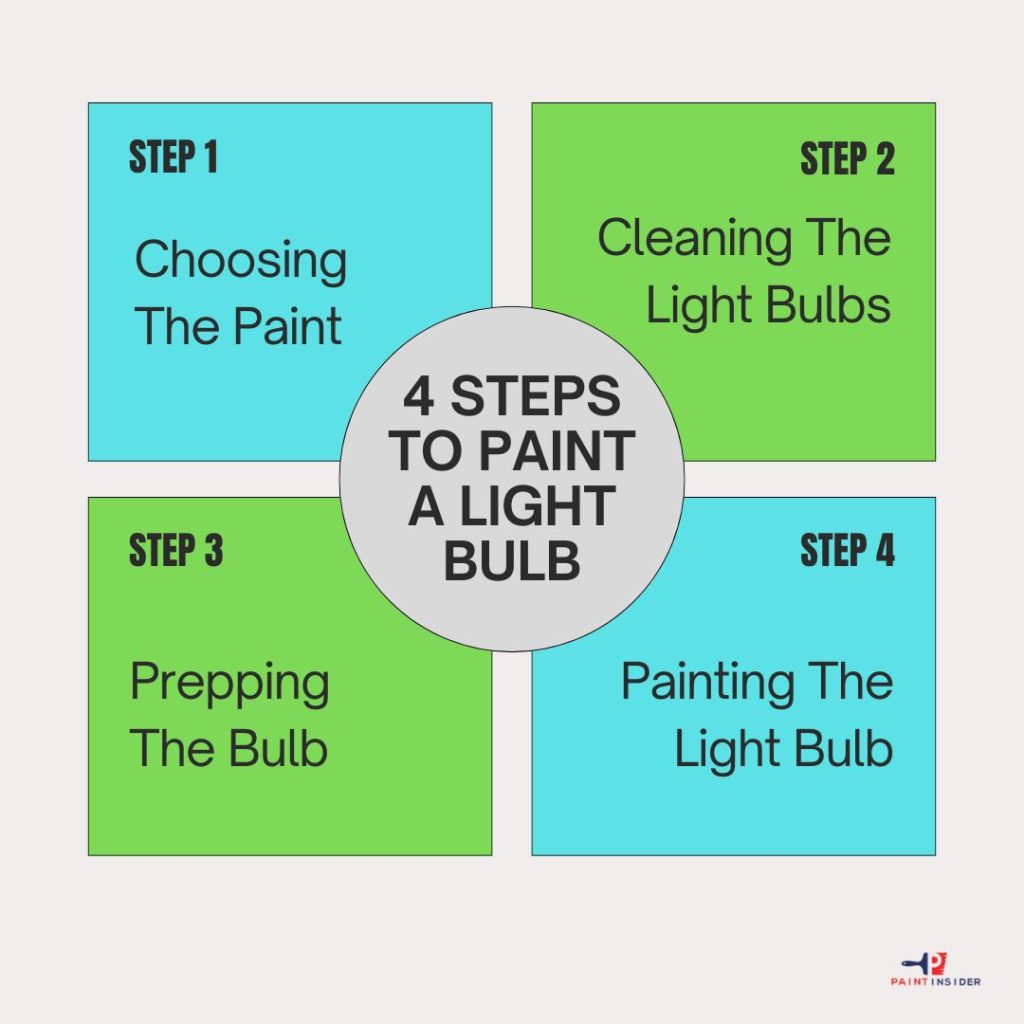Illumination is very important when it comes to brightening your spaces. For that reason, in this article, we will share some tips on how to paint a light bulb.
Introduction: The Art of Painting Light Bulbs
You may want different lighting options for different areas of your home or work office and there are different options you can choose from. Although getting creative with your lights is fun many people do not care about the type of lights they are using and would prefer lights with low environmental impact such as LEDs which also consume less energy. Light bulbs can help you express your style and add warmth to your environment; they are not just the traditional lights anymore. They are also available in different shapes and designs and some are trendier than others. You also have the option to customize them to your style and paint them especially if you’re doing the interior decoration.
Supplies Needed for Painting Light Bulbs
When painting light bulbs, it’s important to use the right tools and materials to ensure safety and achieve a clean, vibrant finish. Here’s a list of the tools and materials you’ll need:
Tools:
- Paintbrushes
- Painter’s Tape
- Protective Gloves
- Newspaper or drop cloth
Materials:
- Acrylic Glass Paint
- Glass Cleaner
- Primer
These materials and tools will help you get started on painting light bulbs, whether for functional purposes or decorative art!
Steps To Paint A Light Bulb

Step 1: Choosing The Paint
Not all paints are the same and there are paints specifically designed for different types of surfaces. Although some may consider it not safe to paint your light bulbs, it is safe if the right paint is used. In this case, you will need to use heat-resistant glass paints, this type of paint allows heat to escape and prevent the bulb from getting too hot which can cause it to explode. It is recommended to not use water-based paints on light bulbs as they don’t last long because of the color evaporating off the bulb because of the heat, so if you’re looking for a long-lasting solution, avoid these types of paint. Glass paints, are much like acrylic paints are water-based, the difference is that glass paint is heat resistant which means the paint will last longer.
Step 2: Cleaning The Light Bulbs
There are several ways of cleaning your light bulbs to free them from dust and dirt so that the paint is easier to apply and adheres better. You can choose to clean the light bulbs with rubbing alcohol, use a cotton ball or paper towel, and gently clean the bulb with the alcohol. Light bulbs can also be cleaned with soap and water instead of alcohol, simply dampen a cloth with soap and water and gently clean the bulb, making sure the cloth is not soaking wet to not damage the bulb, you can let it air dry for a couple of minutes for it to dry well or use a clean towel to dry it.
Step 3: Prepping The Bulb
Once the bulb is dry, you can choose to sand it or add primer based on your desired result. Sanding the bulb can soften the light, reducing its brightness. Alternatively, you can lightly sand it with fine grit (like 320), which helps the new paint stick without diffusing the light. Use bulbs of at least 40 watts for adequate brightness, and clear bulbs are better than frosted ones for color visibility. LEDs are a good choice too, as they generate less heat, making modifications easier.
Adding primer is helpful as it improves paint adhesion and durability. You can spray primer on it for easy application. First, secure the bulb in place to avoid damaging wet paint. A small piece of tack can hold the bulb steady; just press the base into it on a smooth surface. Then, apply 1-2 thin coats of primer, waiting 5-10 minutes between each coat for drying. After priming, let it dry for 1-2 hours.
Step 4: Painting The Light Bulb
Once the primer is added you can proceed with painting the light bulb. The paint can be sprayed on or brushed on depending on what’s easier for you to work with, although both methods can be used if you’re planning to add some decorating ideas. Use a small brush so that painting your light bulb is easier and you can reach every area of the bulb use smaller brushes to apply details and decorate as desired. Apply 1-2 thin coats of your main color and allow 10 minutes for each coat to dry. Once the bulb is fully dry you can test it to check if you’re satisfied with the color, you can always apply more coats of paint if needed. Normally it can take 3-4 hours for the light bulb to fully dry.
Tips to stay safe during the process
When painting a light bulb, safety is key. Make sure you’re in a well-ventilated space to reduce exposure to any fumes from paint or solvents. It’s also a good idea to wear a mask and gloves to protect your skin and lungs from harmful chemicals during your project.
Always remove the light bulb from its fixture before painting. Using an unplugged bulb reduces the risk of electrocution. Choose non-toxic paints made for glass surfaces, as they stick better and produce fewer fumes than regular craft paint. Finally, cover your workspace with newspaper or plastic sheets to catch spills and keep your area clean and safe for future projects. This easy preparation can turn a risky task into a fun experience!
Conclusion: Get Creative with Painted Light Bulbs
Incorporating painted light bulbs into your decor is an innovative way to blend artistry with functionality. By exploring the diverse hues and patterns you can create, you can transform ordinary lighting into eye-catching focal points. Imagine a warm, amber glow filtered through a hand-painted design that adds texture and personality to your space. Not only is this an opportunity for creative expression, but it also allows for customization that reflects your unique style.
When painting light bulbs, use heat-resistant paints for safety and durability. Try different techniques like sponging or stenciling for eye-catching results that enhance your decor. Consider how the colors match your room’s palette; a bright bulb can liven up a dull corner, while soft pastels can create a calm reading area. By painting light bulbs creatively, you’re not just lighting your home; you’re creating an atmosphere that reflects your personality.

